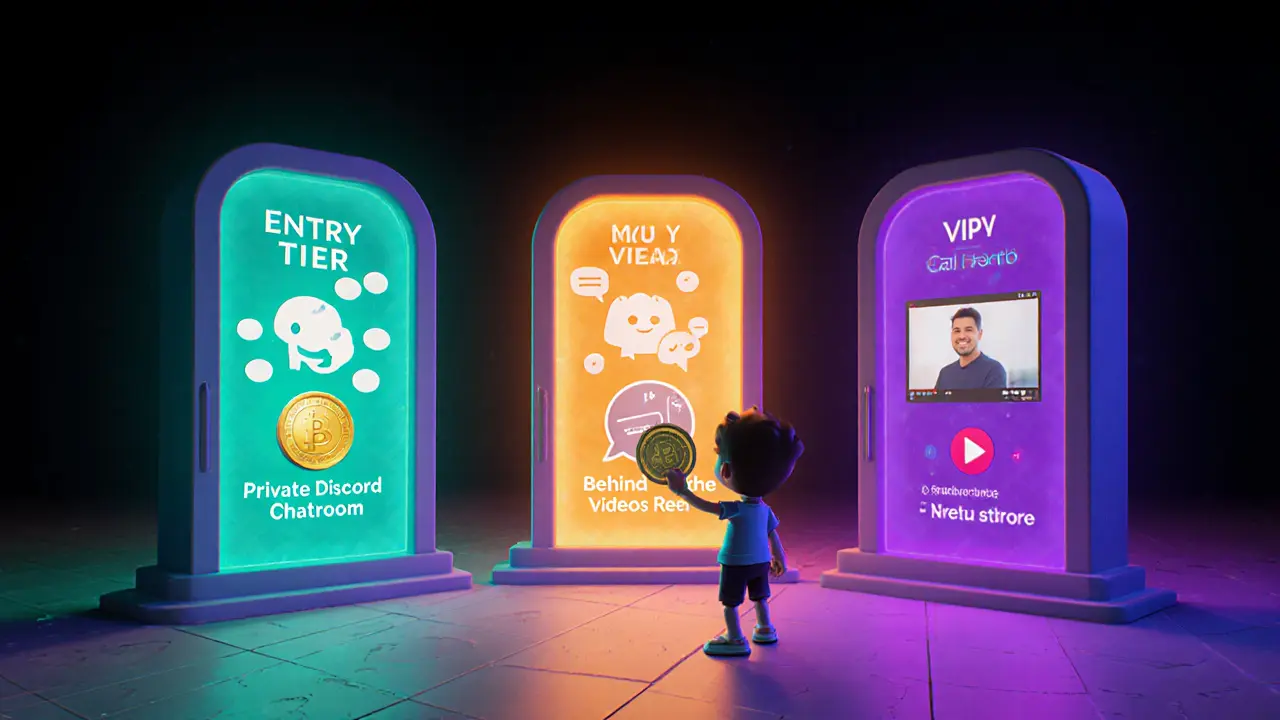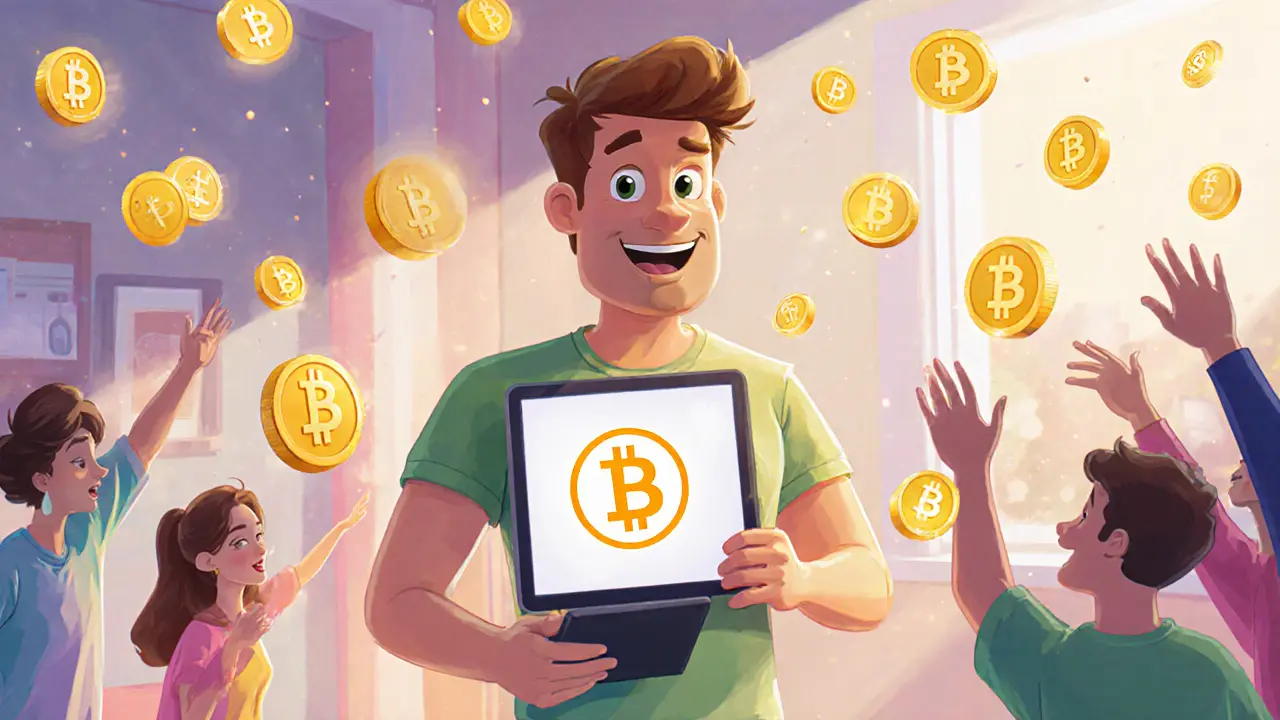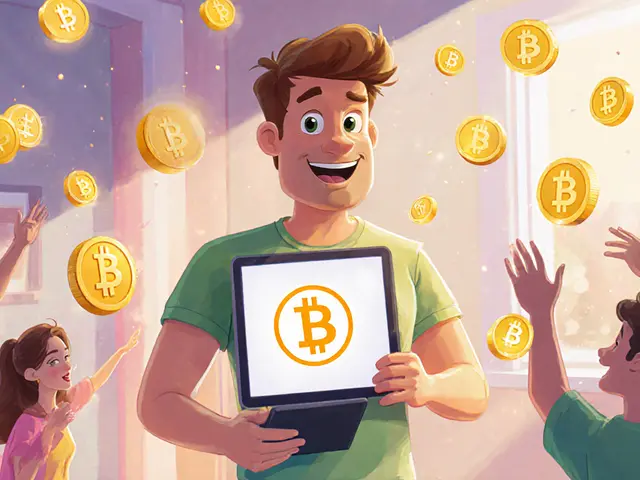Social Token Revenue Calculator
Token Settings
Revenue Estimate
Based on article findings: 30-50% higher engagement rates versus basic subscriptions
Creators are constantly hunting for new ways to turn attention into cash. Social tokens promise a shortcut: they let fans buy a piece of the creator’s brand and unlock exclusive perks, while the creator gets a direct revenue stream that isn’t tied to YouTube ads or Instagram sponsorships. This guide breaks down what social tokens are, how they power creator rewards, and what you need to know before launching your own token‑gated community.
What Exactly Is a Social Token?
Social token is a fungible digital asset issued on a blockchain to represent ownership, access, or governance rights within a creator’s ecosystem. Unlike a non‑fungible token (NFT) that marks a single piece of art, a social token follows the ERC‑20 (Ethereum) or SPL (Solana) standard, meaning each token is interchangeable with any other of the same type.
Three main flavors exist:
- Personal tokens - built around an individual creator’s brand.
- Community tokens - represent a collective, such as a fan club or DAO.
- Creator tokens - focus on content output and grant utility like early‑access videos.
These tokens live on blockchains such as Ethereum, Polygon, and Solana, each with its own cost structure and speed.
Why Creators Use Tokens for Rewards
Traditional platforms keep a slice of every dollar and control the audience relationship. Social tokens flip that script:
- Direct ownership - Fans hold a tradable asset that can appreciate, turning them from passive viewers into stakeholders.
- Programmable perks - Smart contracts can automatically grant Discord roles, exclusive livestream links, or voting power.
- Higher engagement - Studies show 30‑50% higher interaction rates versus basic subscription models.
For creators with a tight‑knit superfank base, token‑gated experiences often deliver 3‑5× the lifetime value of a standard Patreon subscriber.
Designing Token‑Gated Rewards: Real‑World Examples
Reward structures usually tier by token holdings. Here are three proven setups:
- Entry tier (100tokens): Access to a private Discord channel and weekly Q&A sessions.
- Mid tier (500tokens): All entry perks plus monthly behind‑the‑scenes videos and early merch drops.
- VIP tier (1,000tokens): Direct video calls, co‑creation voting rights, and occasional profit‑share events.
Creator DJ Aoki generated $1million in sales within 24hours by offering a mix of meet‑ups, exclusive tracks, and governance votes through his $AOKI token.

Step‑by‑Step: Launching Your First Social Token
The process can feel technical, but breaking it into four stages makes it manageable.
- Set up a wallet (MetaMask for Ethereum/Polygon or Phantom for Solana). Expect 5‑10hours of learning.
- Define tokenomics: total supply, price, distribution method, and utility tiers. Most creators spend 15‑20hours here.
- Build community education: create explainer videos, FAQs, and a launch timeline. This phase often takes 20‑30hours.
- Launch and manage: mint the token, open sales, and continually add gated content. Ongoing effort is about 5‑10hours per week.
Platforms like Rally charge a 1.5% fee on sales, while Roll offers a $29‑per‑month plan for premium features. Choose based on your audience size and technical comfort.
Comparing Blockchains for Social Tokens
| Attribute | Ethereum | Polygon | Solana |
|---|---|---|---|
| Standard | ERC‑20 | ERC‑20 (layer‑2) | SPL |
| Avg. Transaction Cost | $1.50‑$5.00 | under $0.01 | under $0.00025 |
| Speed (TPS) | ~30 | ~2,000 | ~65,000 |
| Ease of Integration | High (most tools built for ERC‑20) | High (compatible with Ethereum wallets) | Medium (requires Phantom or Sollet) |
| Regulatory Perception | Scrutinized (SEC focus) | Similar to Ethereum | Less precedent, still under SEC watch |
If your audience is already using MetaMask, Ethereum or Polygon feels natural despite higher fees. For ultra‑low‑cost micro‑rewards, Solana can be a better fit.
Benefits vs. Traditional Monetization
Here’s a quick side‑by‑side view:
- Revenue share: Tokens let you keep 100% of sales (minus platform fees). Platforms like Patreon take 5‑12%.
- Engagement: Token holders tend to interact daily because they have skin in the game.
- Liquidity: Tokens can be traded on secondary markets, giving fans an exit path.
- Risk: Price volatility can scare non‑crypto fans; regulatory uncertainty can lead to legal headaches.
- Complexity: You need to manage wallets, smart contracts, and tax reporting.
In a nutshell, if you have a highly engaged fanbase and can commit to delivering consistent utility, the upside usually outweighs the operational load.
Legal & Tax Considerations
Regulators increasingly view some tokens as securities. The SEC’s Howey Test looks at whether investors expect profits from the efforts of others. To stay on the safe side:
- Provide clear utility-access, voting, or services-rather than pure profit promises.
- Consider identity verification (Roll’s “Verified” program reduces fraud risk).
- Consult a tax professional: token sales count as income, and secondary market gains may be capital gains.
Failing to comply can result in fines or forced token swaps, so treat compliance as part of your launch checklist.
Best Practices for Sustaining Token Value
Data shows projects that deliver weekly updates keep token prices up to 65% higher than monthly‑only projects. Follow these habits:
- Content cadence: Post exclusive videos, behind‑the‑scenes clips, or AMA sessions every week.
- Transparent roadmaps: Publish a quarterly plan for new utilities and stick to it.
- Community education: Produce short “How to use your token” videos; creator Austin Rief’s 12‑part series kept 90% of his token’s value after six months.
- Reward liquidity: Enable token‑to‑fiat bridges like Rally Pay to let fans cash out without a crypto exchange.
These steps turn a speculative asset into a functional membership key.
Future Outlook: Where Social Tokens Are Headed
Industry forecasts peg the creator‑token market at $8.5billion by 2025, a 67% CAGR. Key trends to watch:
- Cross‑platform integration: Twitter’s “Tokens for Creators” beta lets creators distribute tokens directly in tweets.
- Real‑world utility: By 2025, 60% of token launches will bundle physical merch or event tickets.
- Regulatory clarity: Expect more “verified” programs and possibly a US‑style licensing regime for token creators.
- Token‑gated ecosystems: Multi‑creator DAOs like Friends With Benefits let fans hold a single token to unlock many different creators’ content.
If you position your token as a utility‑first community pass and stay on top of legal changes, you’ll be ready for the next wave.
Key Takeaways
- Social tokens let creators monetize directly, give fans tradable ownership, and boost engagement.
- Choose a blockchain that matches your audience’s wallet preferences and cost tolerance.
- Design clear, tiered rewards and deliver them on a weekly schedule to sustain value.
- Treat compliance, tax, and education as part of the launch checklist-not an afterthought.
- Future growth will hinge on cross‑platform token support and real‑world utility, so plan for integration early.
Frequently Asked Questions
Can I launch a social token without coding?
Yes. Platforms like Rally and Roll provide no‑code token generators. You still need to understand wallet setup and basic tokenomics, but the smart contract is created for you.
What blockchain has the lowest fees for fan rewards?
Polygon and Solana currently offer sub‑cent transaction costs. Polygon remains compatible with Ethereum wallets, making it the easiest low‑fee choice for most creators.
How do I keep my token’s price from crashing?
Focus on utility, not speculation. Provide weekly gated content, maintain a transparent roadmap, and give holders real ways to use the token (access, voting, merch). Consistent value delivery reduces price volatility.
Do I need to pay taxes on token sales?
Yes. Token sales count as ordinary income at the time of receipt. If holders later sell the token, any profit is typically a capital gain. Consult a tax professional familiar with crypto.
Is a social token considered a security?
It can be, depending on how it’s marketed. If the primary promise is profit from the creator’s effort, regulators may classify it as a security. Emphasize functional utility and avoid guaranteed returns to reduce risk.


Comments
The guide walks you through tokenomics like a textbook. Yet it glosses over the real pain of dealing with volatile gas fees. Most creators think they can just mint and sell without a hitch. In practice the fees on Ethereum can eat half of your revenue. Switching to Polygon or Solana reduces cost but introduces new complexities. The article mentions community engagement rates, but no data on churn. Without retention, token holders will dump their assets. The legal section is vague about securities law. A creator who ignores the Howey Test invites regulatory trouble. The step‑by‑step launch checklist feels like a checklist for a hobbyist. You still need to manage wallets, tax filings, and community education. The token‑gated reward examples are decent, but they assume you already have a tight‑knit fanbase. For newcomers, building that fanbase is the hard part. The guide could benefit from a realistic projection of effort versus reward. Overall, it's a decent primer if you already understand the underlying crypto landscape.
You’re missing the forest for the trees. The calculator assumes perfect sales conversion, which never happens in reality. Crypto‑savvy fans are a niche, not the majority of your audience. Ignoring tax implications is a rookie mistake. If you want a sustainable model, start with realistic adoption rates.
Oh, great, another "easy" token launch guide. As if developers magically appear when you click "calculate". The sarcasm is almost as thick as the platform fees they gloss over.
Look, if you actually follow the steps, you might see some results 😊. Consistency is key, and those weekly AMAs can keep the community buzzing. Keep the hype alive and the tokens will flow!
Not gonna lie, the part about using Discord for token tiers is solid. Just make sure you don’t overwhelm new fans with too many channels.
Indeed, the balance between exclusivity and accessibility is paramount. One must delineate clear utility for each tier to avoid token devaluation.
The friendly tone of the guide makes complex blockchain concepts approachable. It’s helpful for creators who are new to crypto but eager to engage.
Honestly it reads like a sales pitch. Too many buzzwords. Minimal real‑world data. Shows the hype not the grind.
When you’re just starting, think of your token as a community passport. Offer genuine value, stay transparent, and the loyalty will follow.
Transparency is nice until you realize most creators are just chasing vanity metrics. A moral compass won’t fix poor tokenomics.
i think the guide could use some more real exmaples. how about spicify a case where a token actually flopped and why? tht would be eassy to learn from.
Ah, the tragedy of hubris! A creator launches a token with grandiose dreams, only to watch it sink like Icarus after a single gust of market volatility. The drama of hope turned to ash is all too familiar.
Honestly, these platforms are part of a larger agenda to control creator revenue streams. They’re just another front for surveillance and manipulation, even if they dress it up as ‘community building’.
I understand the concern, but let’s keep the discussion factual. The technical barriers are real, but they’re not insurmountable with proper guidance.
From an American perspective, it is imperative that creators reclaim their financial sovereignty. Social tokens offer a patriotic alternative to foreign platform dependencies.
Indeed, leveraging token‑gated ecosystems aligns with the emergent paradigm of decentralized content syndication. By integrating DAO‑driven governance, creators can catalyze network effects and monetize micro‑interactions at scale.
This whole token hype is just a scam to get gullible fans to buy digital junk. Nothing new, same old trick.
That’s a harsh take! 🌟 Remember, some creators genuinely benefit and build stronger bonds with their audience. Keep an open mind and you might see the positives.
Sure, because every creator can become a crypto mogul overnight.
Yeah, reality sucks. Tokens flop. No magic.
While the outlook may seem bleak, thoughtful implementation and community education can mitigate those pitfalls. A measured approach often yields sustainable growth.